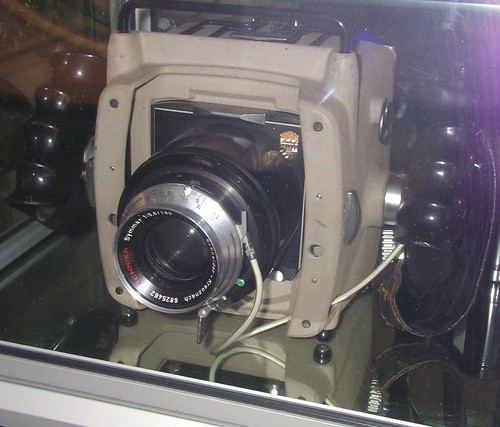Difference between revisions of "Linhof Aero Technika"
| Line 2: | Line 2: | ||
|image_source= http://www.flickr.com/photos/89864432@N00/164255247/in/pool-camerapedia/ | |image_source= http://www.flickr.com/photos/89864432@N00/164255247/in/pool-camerapedia/ | ||
|image= http://farm1.static.flickr.com/71/164255247_253501049e.jpg | |image= http://farm1.static.flickr.com/71/164255247_253501049e.jpg | ||
| − | |image_align= | + | |image_align= right |
|image_text= A [[Linhof]] Aero Technika | |image_text= A [[Linhof]] Aero Technika | ||
| − | + | }} | |
The '''Aero Technika''' cameras were [[aerial camera]]s made by [[Linhof]]. Some of the cameras were used by several NASA/ESA space missions. The Aero Technika was developed in 1972/73. They used 126mm [[rollfilm]] with motorized film advance. The Film cassettes were for 150 exposures. A vacuum film cassette holder kept film exactly in focal plane. Interchangeable focusable lenses with focal lengthes between 90mm and 250mm were available. | The '''Aero Technika''' cameras were [[aerial camera]]s made by [[Linhof]]. Some of the cameras were used by several NASA/ESA space missions. The Aero Technika was developed in 1972/73. They used 126mm [[rollfilm]] with motorized film advance. The Film cassettes were for 150 exposures. A vacuum film cassette holder kept film exactly in focal plane. Interchangeable focusable lenses with focal lengthes between 90mm and 250mm were available. | ||
Revision as of 08:37, 22 February 2011

|
| A Linhof Aero Technika |
The Aero Technika cameras were aerial cameras made by Linhof. Some of the cameras were used by several NASA/ESA space missions. The Aero Technika was developed in 1972/73. They used 126mm rollfilm with motorized film advance. The Film cassettes were for 150 exposures. A vacuum film cassette holder kept film exactly in focal plane. Interchangeable focusable lenses with focal lengthes between 90mm and 250mm were available.
Links
- Linhof History in German mentions the Aero Technika twice, shows images of this and other Linhof aerial cameras